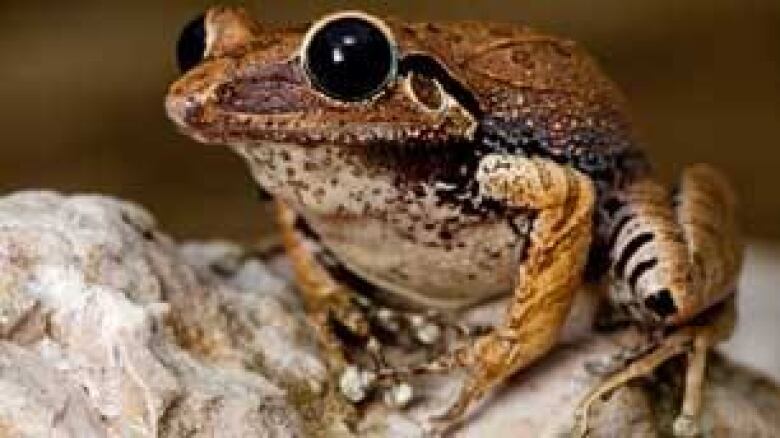6 rare frogs found in Haiti
Earthquake an opportunity to boost conservation: scientist
Six frogs that haven't been seen in more than 14 years have been rediscovered in Haiti.
The frogs were found in one of the remote mountains in the country's southwest in October, Conservation International said Wednesday.
The non-profit group has been funding expeditions around the world since July to search for 100 species of amphibians that haven't been seen in more than a decade.
The six frogs found in Massif de la Hotte, one of the last remaining patches of native forest in the struggling nation, include:
- The Hispaniolan ventriloqual frog, last seen in 1991, which produces chirps that are projected so they sound as though they come from a different location than the frog itself.
- Mozart's frog, last seen in 1991, named because an audiospectrogram of its call resembles musical notes.
- The La Hotte glanded frog, last seen in 1991, which has unusual sapphire-blue eyes.
- The Macaya breast-spot frog, last seen in 1991, which is one of the smallest frogs in the world,at just 15.1 millimetres long.
- The Hispaniolan crowned frog, last seen in 1991, named for crown-like bumps at the back of its head.
- The Macaya burrowing frog, a black-eyed frog last seen in 1996, but never before in the part of Haiti where it was found.
The expedition was led by Robin Moore, amphibian conservation officer at Conservation International.

Haiti is home to 49 native species of amphibians, many of them very rare, including 15 that are found nowhere else in the world, Conservation International reports.
Less than two per cent of Haiti's original forest remains, and a lot of rare frogs are confined to two small patches of just a few square kilometres each: Massif de la Hotte, in the country's southwest, and Massif de la Selle, in the southeast near the captial of Port-au-Prince.
In the wake of the earthquake, many people fled nearby Port-au-Prince forrural villagesnear Massif de la Selle and even Massif de la Hotte, Moore said.
"The more people you have, the more pressure you have on the forests," he added. "One fear was that this would push it over the edge that these resources would just be completely stripped."
Haiti's rural population clears forests for subsistence farming and to make charcoal as their main fuel, he said.
Nevertheless, Conservation International chose to visit Haiti at this time because of all the international attention and aid focused there as a result of the earthquake.
'Window of opportunity'
Prior to the earthquake, Moore said, the group had spent four years working in Haiti, but had trouble engaging the international community there. That has changed.

He added that conservation efforts could really improve the quality of life for the population because of the nature of many of their problems.
"They have problems obviously with floods, with droughts, soil erosion you know, a lot of the rivers run brown. That's really a result of the environmental degradation."
In fact, the situation seems to be improving now for the forests, as rebuilding in Port-au-Prince has lured many people back from the countryside, Moore said. People are also recognizing that Massif de la Selle is an important watershed for Port-au-Prince, and some efforts are being made to reforest it.
Frogs are sensitive to environmental stress so they are often used as indicators of healthy ecosystems. The rediscovery of six species in Haiti is a sign of hope, Moore said.
"Their survival shows us that not all is lost on Haiti we have something to protect and grow from."












_(720p).jpg)


 OFFICIAL HD MUSIC VIDEO.jpg)
.jpg)



























































































